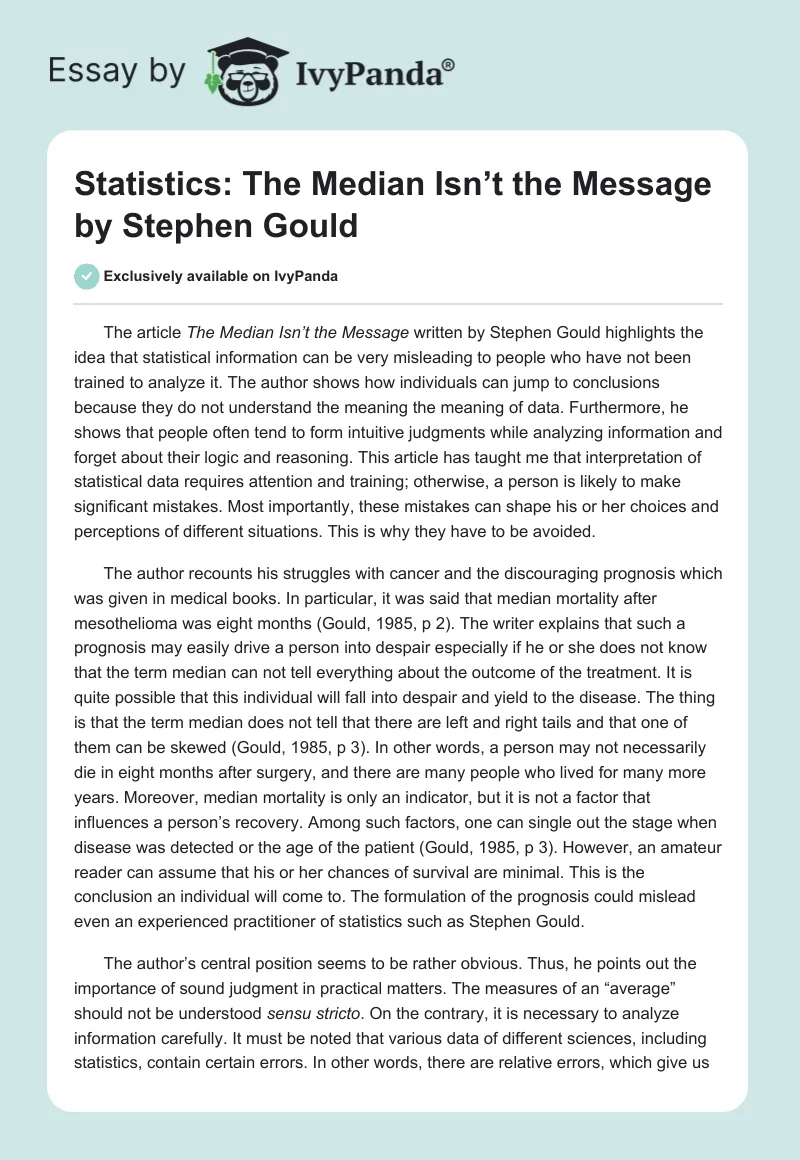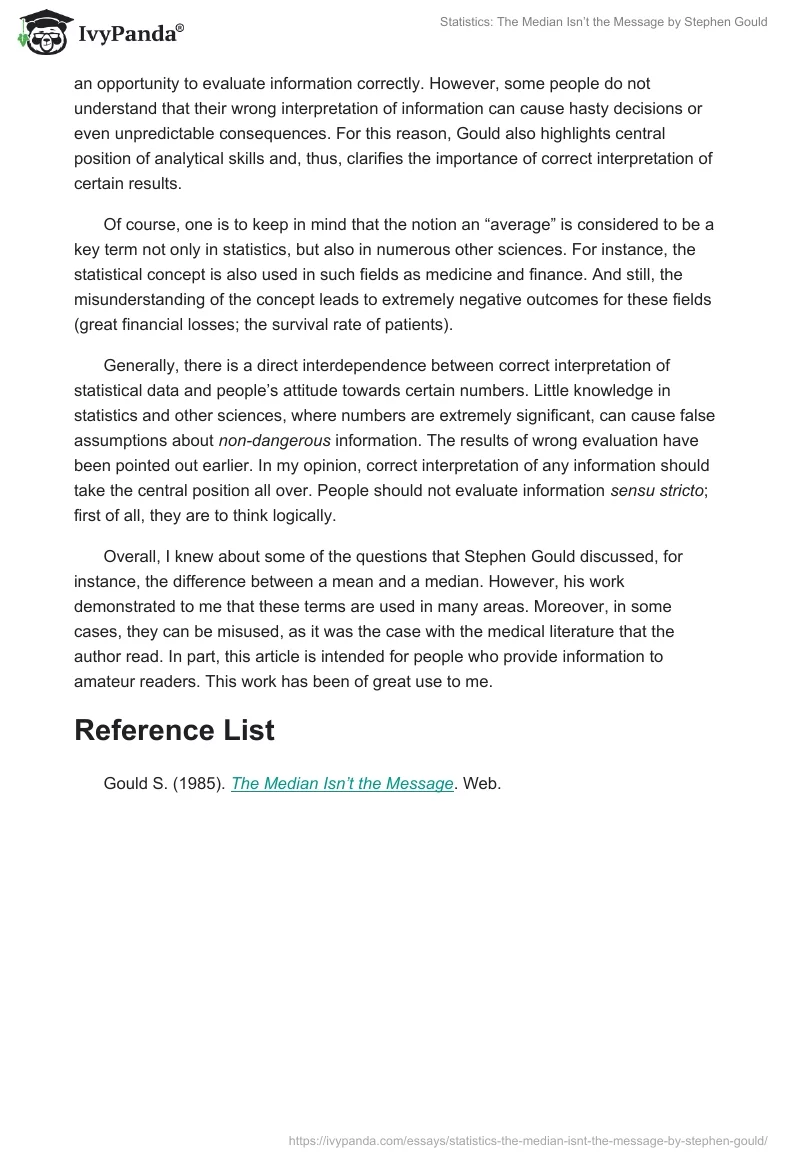The article The Median Isn’t the Message written by Stephen Gould highlights the idea that statistical information can be very misleading to people who have not been trained to analyze it. The author shows how individuals can jump to conclusions because they do not understand the meaning the meaning of data. Furthermore, he shows that people often tend to form intuitive judgments while analyzing information and forget about their logic and reasoning. This article has taught me that interpretation of statistical data requires attention and training; otherwise, a person is likely to make significant mistakes. Most importantly, these mistakes can shape his or her choices and perceptions of different situations. This is why they have to be avoided.
The author recounts his struggles with cancer and the discouraging prognosis which was given in medical books. In particular, it was said that median mortality after mesothelioma was eight months (Gould, 1985, p 2). The writer explains that such a prognosis may easily drive a person into despair especially if he or she does not know that the term median can not tell everything about the outcome of the treatment. It is quite possible that this individual will fall into despair and yield to the disease. The thing is that the term median does not tell that there are left and right tails and that one of them can be skewed (Gould, 1985, p 3). In other words, a person may not necessarily die in eight months after surgery, and there are many people who lived for many more years. Moreover, median mortality is only an indicator, but it is not a factor that influences a person’s recovery. Among such factors, one can single out the stage when disease was detected or the age of the patient (Gould, 1985, p 3). However, an amateur reader can assume that his or her chances of survival are minimal. This is the conclusion an individual will come to. The formulation of the prognosis could mislead even an experienced practitioner of statistics such as Stephen Gould.
The author’s central position seems to be rather obvious. Thus, he points out the importance of sound judgment in practical matters. The measures of an “average” should not be understood sensu stricto. On the contrary, it is necessary to analyze information carefully. It must be noted that various data of different sciences, including statistics, contain certain errors. In other words, there are relative errors, which give us an opportunity to evaluate information correctly. However, some people do not understand that their wrong interpretation of information can cause hasty decisions or even unpredictable consequences. For this reason, Gould also highlights central position of analytical skills and, thus, clarifies the importance of correct interpretation of certain results.
Of course, one is to keep in mind that the notion an “average” is considered to be a key term not only in statistics, but also in numerous other sciences. For instance, the statistical concept is also used in such fields as medicine and finance. And still, the misunderstanding of the concept leads to extremely negative outcomes for these fields (great financial losses; the survival rate of patients).
Generally, there is a direct interdependence between correct interpretation of statistical data and people’s attitude towards certain numbers. Little knowledge in statistics and other sciences, where numbers are extremely significant, can cause false assumptions about non-dangerous information. The results of wrong evaluation have been pointed out earlier. In my opinion, correct interpretation of any information should take the central position all over. People should not evaluate information sensu stricto; first of all, they are to think logically.
Overall, I knew about some of the questions that Stephen Gould discussed, for instance, the difference between a mean and a median. However, his work demonstrated to me that these terms are used in many areas. Moreover, in some cases, they can be misused, as it was the case with the medical literature that the author read. In part, this article is intended for people who provide information to amateur readers. This work has been of great use to me.
Reference List
Gould S. (1985). The Median Isn’t the Message. Web.


